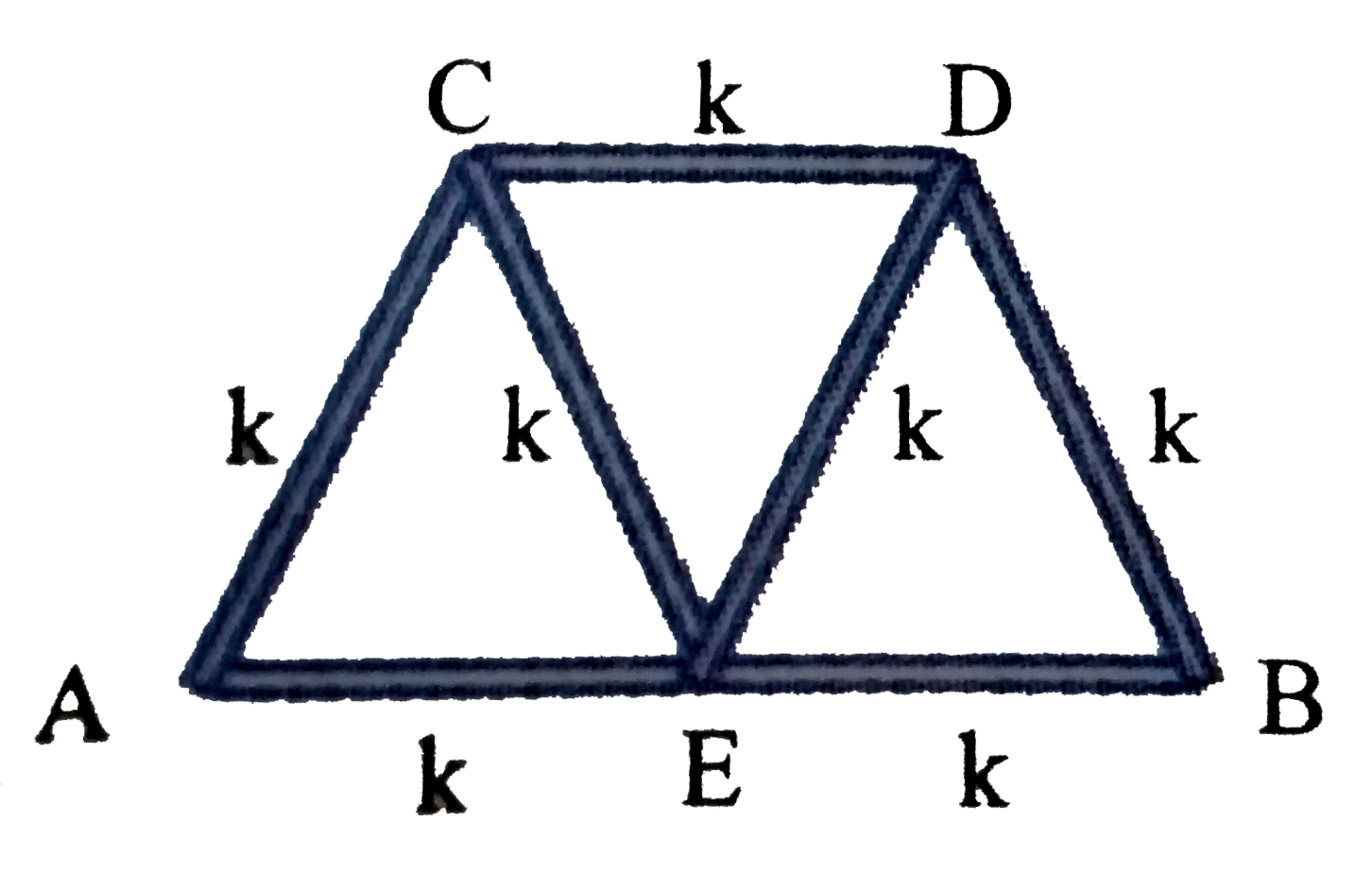A thermocouple is made from two metals, Antimony and Bismuth. If one junction of the couple is kept hot and the other is kept cold, then, an electric current will
flow from Antimony to Bismuth at the hot junction
flow from Bismuth to Antimony at the cold junction
now flow through the thermocouple
flow from Antimony to Bismuth at the cold junction
The correct Answer is:D
(d) At cold junction, current flows from Antimony to Bismuth (because current flows from metal occurring later in the series to metal occurring earlier in the thermoelectric series).
Topper's Solved these Questions
Similar Questions
The constant of a constantan-copper thermocouple is: 4.3×10−2mV/K. The resistance of the thermocouple is 0.5 ohm, that of the galvanometer 100 ohm. One junction of the thermocouple is immersed in melting ice, the other in a hot liquid. What is its temperature if the current in the circuit is 56μA ?
View SolutionState the condition at which we say to the two coils kept close to each other areperfectly coupled with each other.
View Solution
Knowledge Check
- Question 1 - Select One
A thermoelectric couple is made from copper an iron . At the hot junction, current
Aflows from copper towards ironBflows from iron towards copperCflow decreasesDflow increases - Question 2 - Select One
A thermocouple of resistance 1.6Ω is connected in series with a galvanometer of 8Ω resistance. The thermocouple develops and e.m.f. of 10μV per degree temperature difference between two junctions. When one junction is kept at 0∘C and the other in a molten metal, the galvanometer reads 8 millivolt . The temperature of molten metal, when e.m.f. varies linearly with temperature difference, will be
A960∘CB1050∘CC1275∘CD1545∘C - Question 3 - Select One
A thermo couple is formed by two metals X and Y metal X comes earlier to Y in Seebeck series. If temperature of hot junction increases beyond the temperature of inversion. Then direction of current in thermocouple will so
AX to Y through cold junctionBX to Y through hot junctionCY to X through cold junctionDBoth (b) and (c )
A thermocouple circuit consists of two thermal junctions and a low-resistance galvanometer , all in series. The galvanmeter has a resistance of 8Ω and the rest of the circuit has a resistance of 1.6Ω . The temperature develops an emf of 10 microvolt per degree Celsius difference of temperature between the two junction. When one junction is kept is 0∘C and the other in a molten metal, the galvanmeter reads 8 millivolt. What is the temperature of the molten metal? Assume that the emf varies linearly with the temperature difference.
View SolutionSeven identical rods of matrical of thermal conductivity k are connected as shown in All the rod are of identical length l and cross sectional area A if the one end b is kept at 100∘C and the other end is kept at 0∘C The temperatures of the junctions C,D and E(θDandθE) be in the steady state
 .View Solution
.View SolutionIf the cold junction of thermocouple is kept at 0∘C and the hot junction is kept at T∘C, then the relation between neutral temperature (Tn) and temperature of inversion (Ti) is
View SolutionConsider the following two statements A and B , and identify the correct choice out of given answers
A. Thermo e.m.f. is minimum at neutral temperature of a thermocouple
B. When two junctions made of two different metallic wires are maintained at different temperatures, an electric current is generated in the circuit.View SolutionThe thermo emf of thermocouple varies with the temperature θofthehotjunctionasE = atheta + btheta^2∈vo<swheretheratioa//bis700^@C.Ifthecoldjunctioniskeptat0^@C, then the neutral temperature is
View Solution

